Historical Architecture of Grosse Pointe – Welcome to 1048 Yorkshire

Last week we explored the superb formal residence of 281 University Place, completed in 1918, by Charles Kotting, for Harold Palmer.
This week we would like to present 1048 Yorkshire, completed, in 1917, by one of Detroit’s most accomplished architects C. Howard Crane, for Bertrand C. Spitzley, one of Detroit’s more prominent, and successful realtors. We have mentioned Mr. Spitzley a couple of times recently – his home at, 849 Balfour, designed by J. Ivan Dise, in 1923, along with his involvement as the listing agent in the sale of 281 University Place, in 1937.
The portfolio of architect C. Howard Crane could be described as one of the most varied of any architect during the first quarter of the 20th Century. Having designed more than 250 theaters worldwide, including 62 in the Detroit area, it would be easy to conclude he was a prolific architect in this area, and only this area. However, he was also an accomplished designer of office buildings, commercial buildings, and residential projects.
Crane was born in Hartford, Connecticut, in 1885, and moved to Detroit at the turn of the century. During the early stages of his career, in the city, he allegedly worked for Albert Kahn, and Smith, Hinchman and Grylls. Crane designed the first movie theater in the City of Detroit in 1911 – the Columbia Theater, and, in 1915, he was commissioned to design the Majestic Theater. From research on Wikipedia, the Majestic Theater originally seated 1,651 people, which, at the time this was the largest theater in the world built for the purpose of showing movies. As his career developed, so did the size of the theaters he created. According to research on Historicdetroit.org, many of the larger theaters he designed seated over 2,500 people. These large-scale constructions were given the name “movie palaces”.
In Grosse Pointe, Crane designed a couple of commercial buildings, along with several homes, including:
- 38 McKinley – 1914
- 1048 Yorkshire – 1917
- 63 Cloverly – 1927
- 69 Cloverly – 1929
- 79 Cloverly – 1930
Like many designers, during the late 1920’s, the Great Depression hit hard and Crane’s theater and office building commissions reduced dramatically. In 1930, he moved to London England, where he would live until his death, in 1952. Having kept his Detroit office open, Crane made annual visits to the U.S. prior to World War II. During his time in England he continued to design buildings and theaters, however they were far less detailed than before. His most famous work there is the Art Deco inspired Earls Court Exhibition Center that opened in 1937. Crane was associated with at least two further homes, in Grosse Pointe, while he was living in England – 842 Park Lane, and 281 Cloverly – both were completed in 1950.
1048 Yorkshire was very different, in style, to the majority of his other projects. The exterior of the three-story Colonial home was originally white stucco on hollow tile. The layout is a little unusual for a Colonial design in that the position of the front door is on the far left of the front elevation. Nevertheless the design of this symmetrical home is quite striking. The main floor features a narrow 11’ x 8.6’ sq ft hallway, a large 24’ x 13’ sq ft living room, and a 20’ x 10’ sq ft sunroom. The second floor included four bedrooms, and a sitting room, while the third floor contained two additional bedrooms for maids. There was a carriage house over the two-car garage, which featured a kitchen, bath, living room and a bedroom. 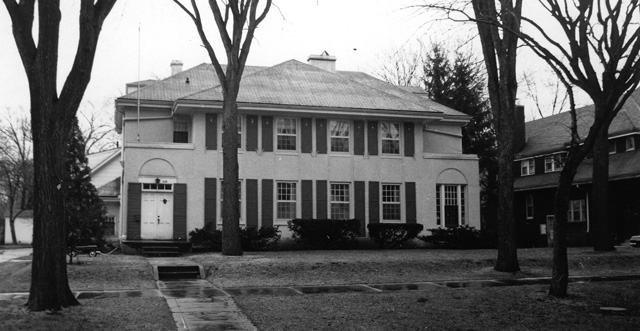


 It appears Bertrand C. Spitzley resided at 1048 Yorkshire for around five years. He then moved into his new home at 849 Balfour. In 1946, the homes owner, Alice Josephine Barry, listed the home for $37,000 (close to $500,000 today). It was sold, that same year, for $35,000 to John L. Drummy, cofounder of a major Oldsmobile dealership, Gage-Drummy Oldsmobile Inc. in Detroit (in 1946), and president of Drummy Oldsmobile Inc, (since 1953).
It appears Bertrand C. Spitzley resided at 1048 Yorkshire for around five years. He then moved into his new home at 849 Balfour. In 1946, the homes owner, Alice Josephine Barry, listed the home for $37,000 (close to $500,000 today). It was sold, that same year, for $35,000 to John L. Drummy, cofounder of a major Oldsmobile dealership, Gage-Drummy Oldsmobile Inc. in Detroit (in 1946), and president of Drummy Oldsmobile Inc, (since 1953).
In May 2019, the roof, and third floor of 1048 Yorkshire was badly damaged by fire, which began in the third-floor attic. It is not clear if the house will be repaired. Source: C&G News.
1048 Yorkshire is a reminder of C. Howard Crane’s varied, and diverse portfolio. While some of his buildings have been lost or demolished, the work of this very unique architect is still appreciated very much.
*Photos courtesy of the Higbie Maxon Agney archives unless stated.
Written by Katie Doelle
Copyright © 2019 Katie Doelle

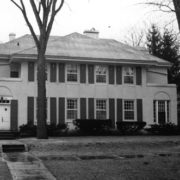
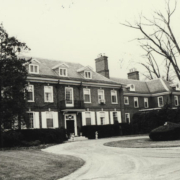
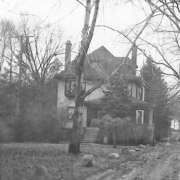
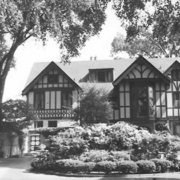

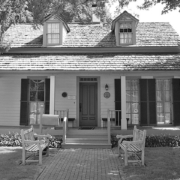
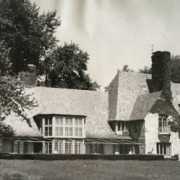


Leave a Reply
Want to join the discussion?Feel free to contribute!